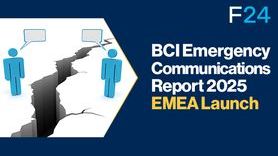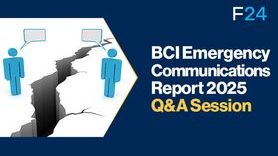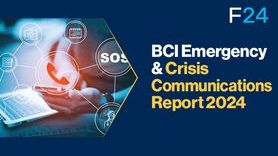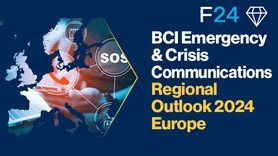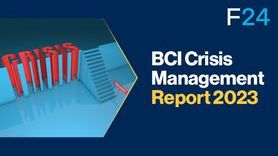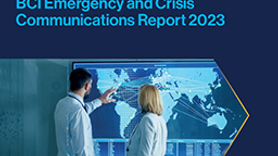BCI Launches Emergency & Crisis Communications Report 2023
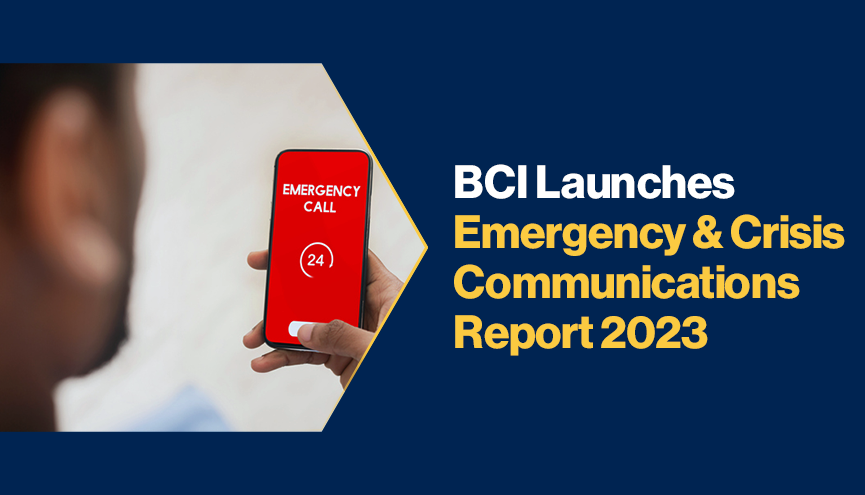
The BCI is pleased to launch its latest Emergency & Crisis Communications Report, sponsored by F24. This report seeks to help organizations benchmark their tools, plans and procedures, but also to incentivise debate and showcase best practice for the design and implementation of crisis management plans.
The continued rise of Software-as-a-Service (SaaS) solutions
SaaS is now used by 81% of organizations for emergency communications. Indeed, SaaS solutions are now eclipsing the use of on-premise installed software, with this change driven by the COVID-19 pandemic and the increase in hybrid or remote working options. Much of the widespread usage of this technology is down to its flexibility, with organizations able to deliver effective communications through a range of devices while in various locations. The report also finds that SaaS enables a faster speed of response and activation of crisis communication plans, as 78.2% of organizations who used SaaS were able to activate their emergency communication plans within 30 minutes, against 58.6% of those using an on-premises solution.
The most popular tools and devices for emergency communication
Mobile phones are still the most popular device to manage emergency communications, partly due to the device’s ability to access corporate emergency communication tools through SaaS. The increased functionality of smart phones – effectively micro-tablets by design – means the use of traditional tablets in emergency scenarios is falling fast – this year by 10 percentage points. They are now less popular than desk phones.
Email is still the most popular means of communication in a crisis, while the second most popular mode of communication was through enterprise software (Teams, Slack, Skype, etc) with 66.1% of organizations using this method. However, with platforms such as Teams having major outages in the past twelve months, many organizations are now switching to specialist tools to manage emergency situations. As such, a third of organizations are now using emergency communications management software while 24.6% have a secure messaging app which is dedicated for use within emergency situations.
Activating the plan
Over the last 12 months, the main trigger for emergency communication plans has been adverse weather with disease outbreak, the primary trigger in the previous two years, now slipping to fifth place. An IT or telecoms incident was the second most common event at 43.3% (up from 42.0% last year). When faced by these triggers, organizations are getting faster at activating their emergency communications plan. Indeed, 73.1% are able to initiate their response within 30 minutes. As a result of these faster speeds and improving emergency communications technology, many organizations are now lowering their activation target times – with the “golden five minutes” becoming a more appropriate target than the previous “golden hour”.
However, the average number of times organizations achieved their expected response levels in 2023 was 74.3%, slightly down on 2021 and 2022. In a similar finding to previous reports, the primary cause for not meeting expected response levels was due to people and not technology, although interviews have shown that organizations are now testing themselves more with shorter response times expected. This year, almost half of organizations attributed their failure to meet response times to the lack of accurate staff contact information.
Challenges seen by organizations not meeting their expected response levels could be targeted and addressed by staff training and through exercising their emergency communications plan. Therefore, this year it is positive to see the increased frequency of training in this area and an increase in the number of organizations who exercise plans twice a year or more.
Other findings:
- 70.5% of organizations are now using digital tools or software to manage their emergency communications within crisis scenarios
- At 85.9%, the most valued feature of an emergency communication tool remains its ability to quickly alert and organise a high number of people
- The implementation of IoT devices within emergency communications plans is becoming more popular, with 39.1% of organizations now using IoT devices.
Rachael Elliott, Head of Thought Leadership, BCI:
“This year’s report continues to demonstrate the importance of training and exercising emergency plans so response times can be met, and it is encouraging to see a marked increase in the frequency of training and exercising this year. Developments in technology and software are also helping to move the emergency and crisis communications sector from one where one-way communication was key to one which is collaborative, informative and critical to driving an effective response to a crisis.”
Benjamin Jansen, Senior Vice President Sales ENS/CM, F24:
“Organizational environments were characterized by disruptions and crises of intense and versatile nature in the past year. Given the expectation of continuing crises, it is encouraging to observe an increasing number of companies taking appropriate measures by relying on software-based solutions or executing emergency trainings on a regular basis. The report results once more underline that digital solutions are nowadays an indispensable part of developing organizational resilience if a company is taking it seriously.
For more information, please contact The BCI: [email protected]
Follow the link below to download a copy of the report:
















